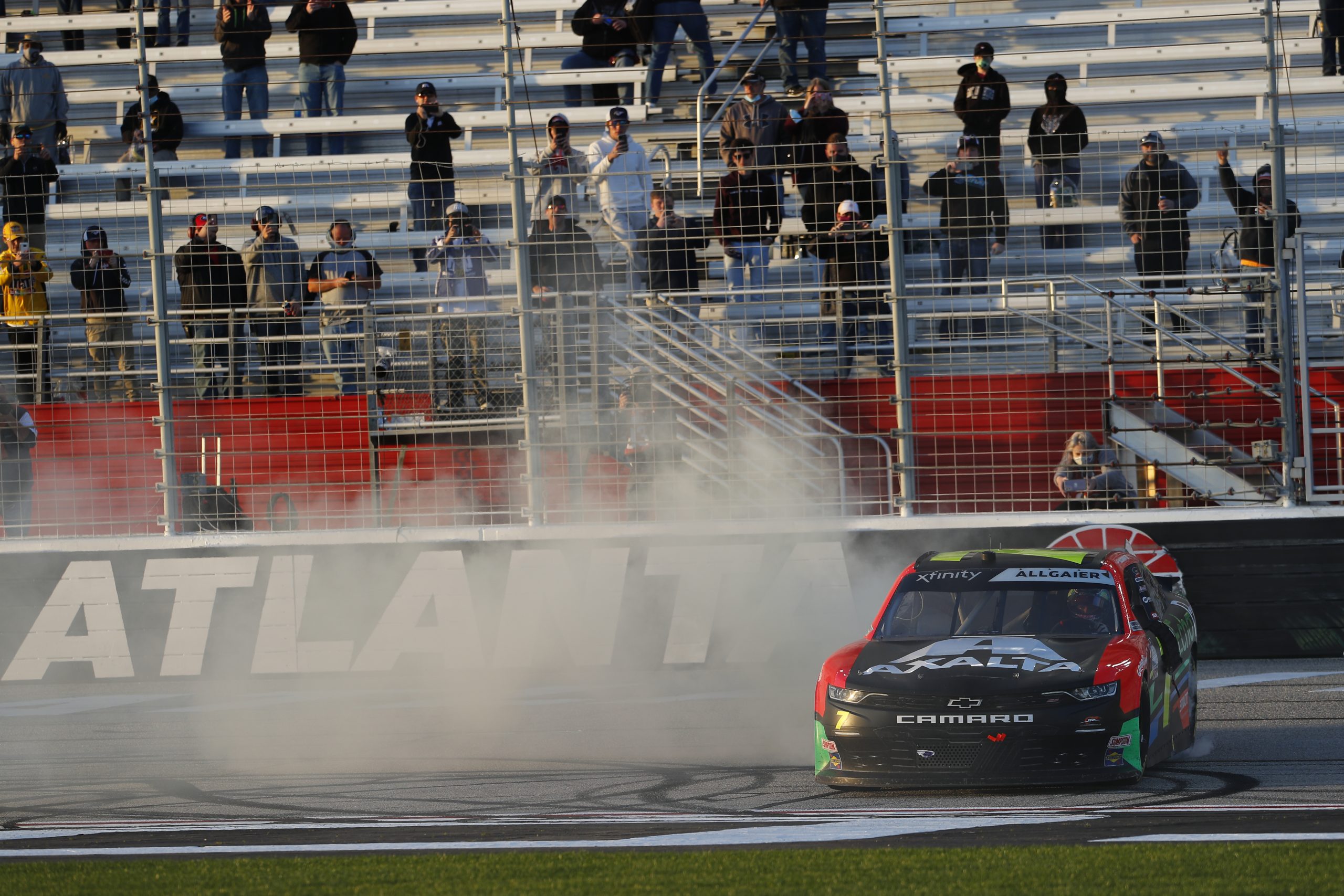
With the NASCAR Cup Series championship season getting underway in Daytona Beach on Feb. 20th, the series is just under a month away from returning to the confines of the Atlanta Motor Speedway in Hampton.
Atlanta Motor Speedway has another new look this season. It features a new racing surface, steeper turns and a narrower track.
After the Cup Series’ July 2021 race, the track’s owner, Speedway Motorsports, began repaving the track surface. The surface was last paved in 1997 when the owners altered it from its original oval to the current 1.54-mile “quad-oval” boasted by most of Speedway Motorsports’ facilities.
As racing surfaces age, the outer layer of smooth asphalt wears away, revealing a coarse underlayer. This underlayer is detrimental to tires which means slower lap times as green flag racing progresses.
However, this also means competitors must use every inch of the race track, from the apron to the wall, searching for grip. Three-wide racing was not rare on the old AMS surface.
“It’s challenging, it’s difficult,” two-time series champion Kyle Busch told Nate Ryan of NBCSports. “You have to figure out how fast you can run, how hard you can push, and yet still try to save your tire and not burn your tires off it…Overall, this is one of the more fun tracks.”
But the maintenance required for the old racing surface was a pain for Speedway Motorsports.
The old surface retained water and took hours to dry, making NASCAR officials nervous on race weekends when rain was in the forecast. During the winter, water under the surface would freeze and expand, causing more cracks to the racing surface.
“In the last five years, we’ve looked at how we take care of groundwater,” said Steve Swift, Senior Vice President of Operations and Development for Speedway Motorsports. “We’ve had races that have been postponed because of weepers (moisture seeping through the track surface).”
The new asphalt uses technology to counter this, called an Open Drainage Layer or ODL. Water under the asphalt passes through the ODL to a groundwater pipe below the surface, taking it away.
This new asphalt eliminates the possibility of water affecting the racing surface and allows it to dry quickly in the event of rain.
Alongside the surface change, the banking in the turns was increased to 28 degrees, the steepest of the mile-and-a-half intermediate tracks on NASCAR’s schedule and the third steepest on the program.
After the 1997 repave, Geoffrey Bodine established the AMS lap record for the series – a qualifying lap with an average speed of 197.48 miles per hour. While speeds may not reach that high, they could reach 190 miles per hour – a mark not seen since 2017.
NASCAR also narrowed the track from 55 feet wide to 52 feet wide on the front stretch, 42 feet wide on the backstretch and 40 feet wide in the turns. These changes will force drivers to race side-by-side and create many opportunities to pass on corner exits.
“In NASCAR, we have our Daytona and Talladega-style draft, and those are on 2.5- and 2.66-mile tracks,” four-time AMS winner Kurt Busch said. “This is a mile-and-a-half. Things are going to be moving quicker. You’re going to be digesting things much faster.”
Kurt, the older brother of Kyle Busch and winner of the last race at Atlanta Motor Speedway, was one of three drivers to participate in tire tests at the renovated speedway in January. Other drivers agreed the track would run like a superspeedway.
Long green flag runs and stretched-out fields defined old Atlanta, but superspeedways like Daytona and Talladega have a lot of pack racing. Cars stay close together to take advantage of each others’ draft, which reduces drag and yields higher speeds.
Cars that leave the group risk losing the draft, thus causing them to lose speed. Atlanta’s new surface, banking and width are conducive to pack racing.
The track could be ideal for the new Next-Gen race car series, which officially debuted at the Busch Clash in Los Angeles early in February.
In preseason testing at Daytona, it was apparent that the Next-Gen car doesn’t suffer as much if they fall out of the draft. It’s easier for drivers to fall back and rejoin a group. Put this car on a smooth narrow surface, and we’re bound to see a lot of two-wide back-and-forth action at AMS.
Ultimately, it’s a clean slate for NASCAR drivers and teams. They’ve yet to race this car or race on this version of Atlanta Motor Speedway. Some teams won’t have accurate information until race weekend. The Folds of Honor QuikTrip 500 on Mar. 21stwill indeed be the first of its kind.
